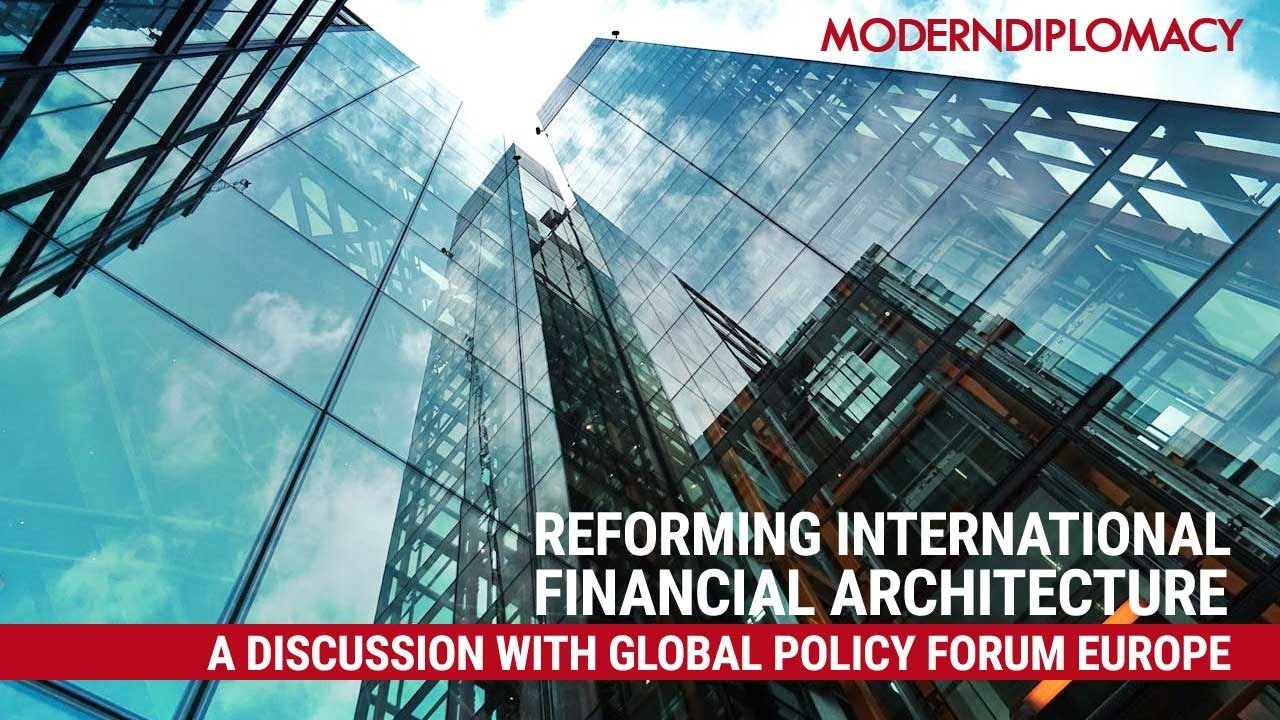The Global Debt Crisis and the Case for Structural Reform – Interview
In a world where 3.4 billion people live in countries that spend more on debt interest than on health and education combined, the global financial system isn’t just flawed, it’s fundamentally unjust. This alarming reality formed the core of our conversation with Bodo Ellmers, Managing Director of Global Policy Forum Europe, following the recent UNCTAD 16 conference in Geneva. Against the backdrop of widening inequality and escalating debt distress across the Global South, Ellmers—a veteran policy expert with over two decades in the field—offered a stark diagnosis of the systemic failures in our international financial architecture and charted a path toward meaningful reform.
The Double Squeeze: How Debt Worsens Inequality
For Ellmers, the debt crisis represents a double-edged sword cutting through global development. “It squeezes fiscal space,” he explains, “constraining governments’ ability to finance public services and development.” This creates a vicious cycle where indebted nations must choose between servicing external debts and investing in their people’s well-being.
The impact manifests in two dimensions: nationally, through reduced spending on social protection, education, and healthcare; and internationally, as debt service payments flow from poor countries to rich creditors, effectively widening the gap between Global North and South.
An Architecture of Imbalance
When asked about characterizations of the international financial architecture as “neo-colonial,” Ellmers focuses on the concrete imbalances. The IMF and World Bank operate on a “one dollar, one vote” system that gives wealthy nations disproportionate power, with the US holding veto rights. Meanwhile, crucial financial regulation bodies like the OECD and Financial Stability Board exclude smaller developing countries entirely, despite setting rules with global impact.
The reform path remains blocked, Ellmers notes, because any meaningful redistribution of voting power would reduce US influence below its veto threshold. This impasse has forced regions to develop alternatives, from China’s new development banks to Africa’s proposed stability mechanism. Yet these solutions come with their own challenges, potentially creating new dependencies even as they offer welcome alternatives to traditional donors.
The Missing Piece: A Sovereign Debt Restructuring Mechanism
Perhaps the most glaring gap in the current system, according to Ellmers, is the absence of a fair sovereign debt restructuring process. Unlike corporate insolvency, where independent courts balance interests, indebted nations must negotiate from weakness with diverse creditors.
Ellmers advocates for a system that would prioritize human rights, ensuring that “a state needs to have the financial capacity to fulfill its human rights obligations towards citizens. This money cannot be touched by creditors.” This approach would fundamentally reorient debt negotiations from purely financial calculations to human-centered outcomes.
Climate Finance or Climate Debt?
The conversation turned to climate finance, where Ellmers describes a “scandal” in the making. Wealthy, high-polluting nations continue to provide climate finance primarily as loans rather than grants, pushing vulnerable countries deeper into debt while addressing climate challenges they did little to create.
While mechanisms like Special Drawing Rights offer temporary relief, Ellmers sees them as treating symptoms rather than root causes. The deeper issue remains the voluntary nature of climate finance commitments and the reluctance of wealthy nations to provide adequate grant-based funding.
A Path Forward: Protest and Policy
For activists and social movements seeking change, Ellmers emphasizes the need for dual strategies. The successful Jubilee campaign of the 1990s combined technical advocacy with mass mobilization, creating pressure that neither approach could achieve alone. This combination remains essential today, expert analysis must meet street-level mobilization to drive meaningful reform.
Conclusion: Reclaiming Sovereignty: The Unfinished Fight for Debt Justice
As Ellmers soberly concludes, “debt kills the SDGs.” With 3.4 billion people affected by this crisis, the need for structural reform transcends economic policy, it becomes a moral imperative for global justice and human dignity. The insights from our conversation paint an unambiguous picture: the current international financial architecture perpetuates inequality, undermines development, and fails to address interconnected crises from debt to climate change.
Yet within this challenging landscape, Ellmers’ analysis also reveals pathways for change. From institutional reforms that rebalance power toward Global South nations, to innovative mechanisms that protect human rights in debt restructuring, to the powerful synergy between grassroots mobilization and technical advocacy, the tools for transformation exist. What’s needed now is the political will to implement them.
Ellmers’ analysis leaves us with a crucial takeaway: the power to change this system lies in a combination of technical precision and unrelenting public pressure. The solutions—from a sovereign debt restructuring mechanism that protects human rights to shifting climate finance from loans to grants—are within reach. What has been missing is the political will to implement them. That will must be forged, and it must be forged now. The future of global justice, and the lives of billions, depend on it.
